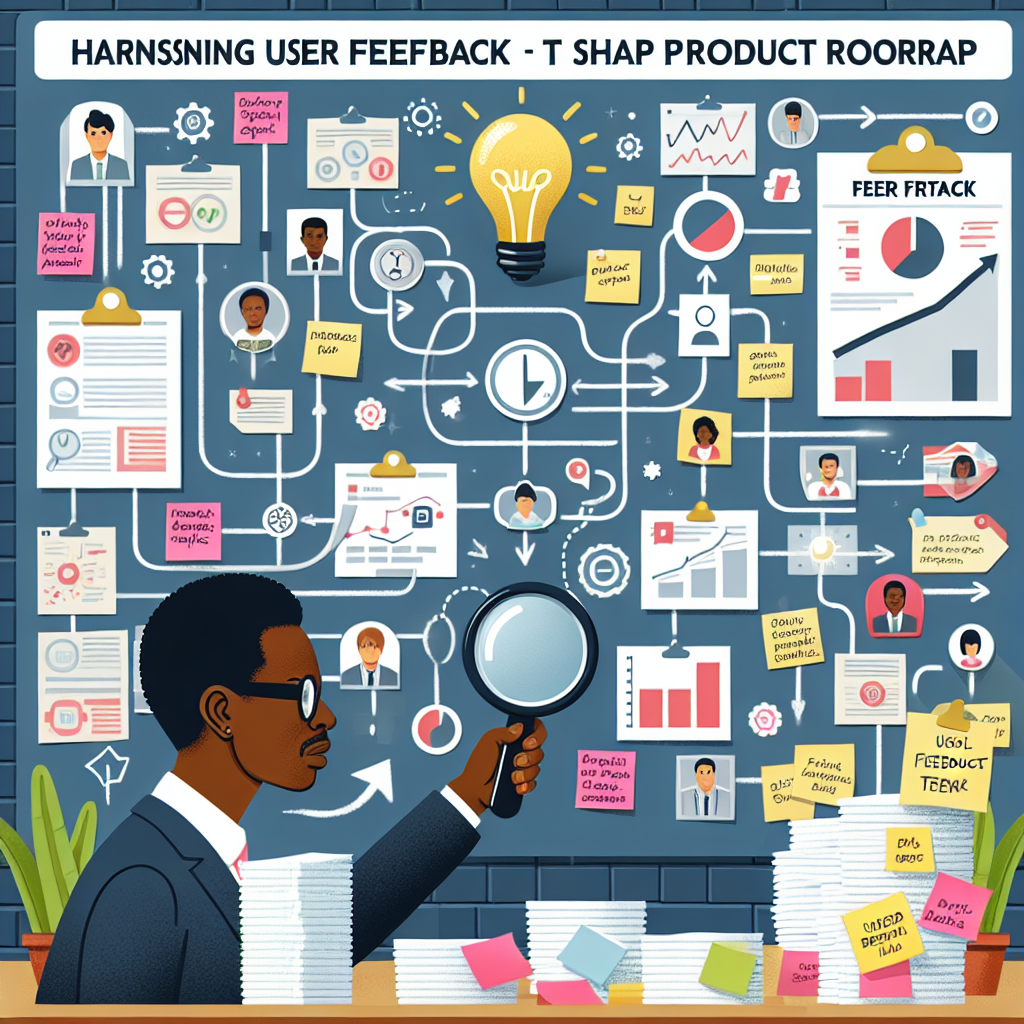Harnessing User Feedback to Shape Product Roadmaps: A Guide for Product Managers

Product management is a multifaceted discipline that requires balancing competing priorities, managing diverse teams, and making data-driven decisions. Today, we'll delve into a crucial aspect of product management: The Role of User Feedback in Shaping Product Roadmaps. Understanding how to collect, analyze, and effectively incorporate user feedback can be the difference between a product's success and failure.
Why User Feedback Matters
User feedback is invaluable for several reasons:
- Identification of Pain Points: Direct feedback from users helps identify issues and pain points that you may not have considered.
- Validation of Hypotheses: It provides validation (or invalidation) for the product assumptions and hypotheses you started with.
- Improvement and Innovation: Continuous feedback loops are a vital component in iterating and innovating your product offerings.
Methods for Collecting User Feedback
Diverse methods for collecting user feedback allow you to gather comprehensive insights:
1. Surveys and Questionnaires
Surveys are a straightforward way to collect structured feedback. Tools like SurveyMonkey and Google Forms make it easy to create and distribute surveys.
Example:
<form action="/submit-feedback" method="post">
<label for="experience">Rate your experience:</label>
<select id="experience" name="experience">
<option value="excellent">Excellent</option>
<option value="good">Good</option>
<option value="fair">Fair</option>
<option value="poor">Poor</option>
</select>
<br>
<label for="comments">Additional Comments:</label>
<textarea id="comments" name="comments"></textarea>
<br>
<input type="submit" value="Submit">
</form>
2. User Interviews
Conducting one-on-one interviews with users can provide deep insights. Prepare questions in advance but allow the conversation to flow naturally.
3. Usability Testing
Usability tests involve observing users as they interact with your product. Tools like UserTesting and Lookback can help facilitate these tests.
4. Analytics Tools
Platforms like Google Analytics and Mixpanel provide quantitative data on how users interact with your product. This data complements qualitative feedback.
Case Study: Success Through User Feedback
Let's examine a real-world example of how user feedback shaped the product roadmap for a SaaS company, ProductCo. The company provides project management software and noticed a decline in user engagement.
Identifying the Problem
ProductCo started by sending out surveys to its user base, asking them to rate their experience and identify any issues they encountered. The results showed that users found the interface cluttered and the onboarding process cumbersome.
Implementing Changes
Based on this feedback, ProductCo made the following changes:
- Simplified UI: Redesigned the interface to be more intuitive and user-friendly.
- Enhanced Onboarding: Implemented a guided onboarding process to help new users get started quickly.
Results
After deploying these changes, ProductCo saw a 25% increase in user engagement and a significant reduction in churn rates. This example underscores the power of user feedback in creating products that resonate with users.
Challenges and Pitfalls
While user feedback is crucial, it comes with its own set of challenges:
- Overloading on Feedback: Not all feedback is actionable. Prioritize feedback that aligns with your product vision.
- Bias in Feedback: Be aware of potential biases from vocal minority groups. Ensure you gather a diverse range of inputs.
- Analysis Paralysis: Don't get stuck in endlessly analyzing feedback. Use it to inform your decisions, not paralyze them.
Best Practices for Incorporating User Feedback
Effective strategies include:
- Regular Feedback Loops: Establish continuous feedback mechanisms to keep your product aligned with user needs.
- Segment Users: Categorize feedback by user segments to better understand diverse needs and preferences.
- Iterate Quickly: Use feedback to make quick iterations and keep improving your product.
- Communicate Back: Let users know their feedback is valued and show them how it's being implemented.
Conclusion
User feedback is a powerful tool for product managers. By understanding and implementing feedback effectively, you can create products that truly meet user needs and drive long-term success. Remember, the key is to balance feedback with your product vision and strategic goals.
Have you had experiences with incorporating user feedback into your product roadmap? Share your stories and tips in the comments below!



